|
Typically, EMDR therapy occurs in weekly or bi-weekly sessions over an extended period. However, EMDR Intensives offer a more concentrated and accelerated treatment option. In this article, I'll be discussing the utility of EMDR intensive sessions. EMDR TherapyTo understand EMDR Intensives, let's start with a brief recap of what EMDR therapy is. Developed by Francine Shapiro in the late 1980s, EMDR is a psychotherapy technique aimed at helping individuals process distressing memories and traumatic experiences. The goal of EMDR is to diminish the emotional impact of these memories, fostering healthier emotional coping. This therapy involves a structured eight-phase approach, where clients, guided by a trained clinician, identify traumatic memories, target negative beliefs, and engage in bilateral stimulation to desensitize and reprocess these memories. Check out these articles for more information about EMDR therapy: EMDR IntensivesEMDR Intensives offer an alternative to the traditional EMDR format, enabling clients to complete the therapeutic process more rapidly. Unlike the typical weekly or bi-weekly sessions, EMDR Intensives involve several hours of therapy per day, often across consecutive days. The duration and frequency varies based on individual needs and tolerance levels. For instance, in my private practice, EMDR intensive sessions might occur twice a week for a a few consecutive weeks. In addition to working in private practice, I am also a clinician with the Davidson Operational Stress Recovery Program. In this program, program participants attend EMDR sessions 3 to 4 times weekly for 4 weeks, with a break between the second and third weeks. The benefits of EMDR intensives are significant, with many clients experiencing substantial progress in a relatively short time. As an EMDR clinician, I have to say it is a privilege to witness the incredible progress made by the courageous clients I have had the honor of working with, both in my private practice and through the Davidson Operational Stress Recovery Program. Their commitment to setting aside time for their healing and mental wellness is nothing short of remarkable. When clients engage in EMDR intensives, they immerse themselves in a process that can often yield the kind of progress that might otherwise take months to achieve with traditional weekly or bi-weekly sessions. The acceleration of this healing journey is a testament to the format and efficacy of the intensive, and to the strength and resilience of the individuals who embark on it. Observing the transformation as clients reclaim their lives rapidly, often with newfound hope and strength, is a profound reminder of the powerful impact of counselling therapy can have. Key BenefitsFrom my experience, here are some of the key benefits I've come to notice in doing EMDR intensives since 2019:
Concentration of Treatment: EMDR intensives allow for a focused and intense healing process over a shorter duration. This can be particularly beneficial for those seeking rapid relief/progress. Deeper Exploration: The extended session length permits deeper engagement with trauma and emotional experiences, often leading to more profound insights and quicker resolution. Minimized Interruptions: At times engagement in therapy can be interrupted by life events, meaning one might go weeks and even months between sessions. EMDR intensives offer a continuous, uninterrupted therapeutic experience. Tailored Approach: EMDR Intensives are adaptable in format and duration, catering to the specific needs, emotional tolerance, and preferences of each client, ensuring a personalized treatment experience. Immediate Support During Processing: Given the intensity of the therapy, having immediate and continuous support from a clinician can be crucial if challenging emotions or memories arise, providing a safety net during the reprocessing phases. Potential for Reduced Overall Cost: While the initial investment in intensives might be higher, the condensed nature of the therapy can mean a reduction in the total cost over time compared to traditional weekly sessions. In sum, EMDR intensives can offer an accelerated route to healing for individuals facing trauma and mental health challenges. This condensed therapy format has yielded faster and more significant results for many clients, which, I believe, makes it an attractive option for those seeking relief from distressing memories and emotional pain. Send me a message or learn more at www.livehappycounselling.com. Please know that no therapy is one size fits all. There are many layers and approaches in counselling psychology and to people's complex experiences. This article is about EMDR therapy and may be of interest to those wanting to learn more about how this therapeutic modality can help them. As with any therapeutic approach, it's crucial to work with a qualified EMDR therapist who can assess your needs and guide you through the intensive process to ensure a safe and effective healing journey. References: Bongaerts, H., Van Minnen, A., and de Jongh, A. Intensive EMDR to Treat Patients With Complex Posttraumatic Stress Disorder: A Case Series. from the Journal of EMDR Practice and Research. (2017). Volume 11, Issue 2. Shapiro, R., Silk Forrest, M. (2013). EMDR: The Breakthrough Therapy for Overcoming Anxiety, Stress, and Trauma. Basic Books: New York. #EMDR #EMDRtherapist #counsellingpsychology #mindbodyconnection #emotions #counselling #counseling #therapy #EMDRclinician #therapist #traumatherapy #psychotherapy #livehappycounselling #psychotherapy #anxiety #trauma #operationalstress #emotions #emotionregulation
0 Comments
First sessions are all about building rapport and understanding what you are wanting from your counselling experience. If it turns out that you are interested in EMDR, then what I'll share during this article may be of interest to you! Please know that no therapy is one size fits all. There are many layers and approaches in counselling psychology and to the complex experiences people have. This information is intended to introduce you to EMDR therapy to inform your expectations prior to starting counselling. First EMDR Session: Building Trust and UnderstandingThe initial session of EMDR therapy focuses on building a strong therapeutic alliance between you and your therapist. Therapeutic alliance refers to the collaborative and trusting relationship between counsellor and client. A strong therapeutic alliance facilitates open and honest communication and ensures clients feel safe, supported, and understood, which in turn enhances the therapeutic process and outcomes. First Sessions May Look Like:History gathering: Exploring your background, any trauma experiences, and past and current symptoms. Sometimes, a symptom checklist is included (such as the PCL-5 for exploring symptoms of post-traumatic stress or the HADS for exploring symptoms of anxiety and depression). This information is important as it ensures your counselling experience is tailored to your specific needs and goals - you are in charge of sharing what feels comfortable to you. All of this information informs your therapist's case conceptualization: their understanding of your history, presenting issues, and trauma experiences you've gone through. It includes your emotional, cognitive, and somatic responses to trauma and potential challenges that may arise during the process of therapy. This detailed understanding is used to formulate a tailored approach to address your unique needs and goals. Discussion of EMDR: Your therapist will talk about the process of EMDR, how it can help, and how it can be used for both building emotion regulation skills and trauma processing. This is a great opportunity to ask questions and have a demonstration of bilateral stimulation. Establishing Safety: Feeling safe, heard, and comfortable with your therapist and within the therapeutic environment is crucial. I strive to provide a rationale for all the therapeutic approaches I use, maintain transparency with the questions I ask, and build in emotion regulation to better ensure you are prepared for future sessions. Treatment Plan: Lastly, you and your therapist will collaboratively develop a treatment plan that focuses on your goals and needs for counselling - this sets the stage for what to expect during each session. It's important to note here that life happens: while we may have a treatment plan, we can work with it flexibly if life throws you something unexpected. Your sessions are yours; therefore, your therapist might start each session by exploring anything that may have changed for you since the previous session and what you feel is important to focus on. EMDR SessionsOnce the foundation is laid in the initial session, subsequent EMDR sessions typically follow a structured process that includes the following phases: Preparation: Before delving into trauma processing, we will work on enhancing your emotion regulation skills. This phase ensures that you are equipped to handle the intense emotions that may arise during EMDR. Your therapist might teach you about the window of tolerance concept, introduce an emotions-sensations vocabulary, and describe the rating scales EMDR therapy utilizes. For example, the Subjective Units of Distress Scale (SUDS) is a self-report measurement tool used to quantify a person's emotional distress or discomfort level in response to a specific trigger or memory. It uses a 0 to 10 range, where 0 represents no distress, and 10 signifies the highest level of distress imaginable. It helps in deepening emotional and somatic awareness and tracking changes in your emotional state during sessions and over time, thus guiding the pacing of EMDR. Assessment and Desensitization: This is the heart of EMDR therapy, where we collaboratively choose a starting point and work on trauma processing. Your therapist will be your steady guide during reprocessing memories, utilizing bilateral stimulation (eye movements, sounds, or tactile sensations using the Thera-tap device), working towards desensitizing the emotional charge associated with them. During the assessment phase, you and your therapist will explore the negative self-perceptions (negative cognitions) entwined with distressing memories. These perceptions often result from one's assumptive beliefs being impacted as a result of difficult experiences. They can come to be deeply anchored in one's sense of self, making them tenaciously resistant to change. The process of letting go of these narratives can feel like venturing into uncharted territory, which can be unsettling at first. However, once a core negative belief is brought to light, your therapist will support you by gently untangling from it through connection with a positive belief, essentially rewiring the brain's pathways to embrace a more compassionate and empowering self-view. This approach fosters healing and enriches your relationship with self, opening up new possibilities for personal growth and transformation. Installation: As the emotional distress linked to the traumatic memories decreases, you'll work on installing positive beliefs and self-perceptions to replace the negative ones. Body Scan and Closure: During this ending phase, your therapist may guide a brief body scan to address any lingering physical sensations related to the distressing memory to ensure you are grounded and connected to present-moment safety. You can debrief the session and discuss home practice suggestions for emotion regulation strategies, resourcing imagery, and positive cognitions developed during your session. Reevaluation: The subsequent session typically begins with a re-evaluation of what was previously worked on. It's a way of assessing progress to see if additional work is needed on memory to further you in moving towards your goals. A Key Feature of EMDR: Tracking the Felt Sense of EmotionOne significant difference between EMDR therapy and traditional talk therapy is how they approach the tracking of the felt sense of emotion. In traditional talk therapy, clients often describe their emotions verbally, sharing their thoughts and feelings with their therapist through conversation. In contrast, EMDR therapy places a strong emphasis on tracking the felt sense of emotion. In EMDR, you will be encouraged and guided in connecting with the bodily sensations and emotions you experience while revisiting traumatic memories. This non-verbal tracking allows for a deeper exploration of emotional experiences, which can lead to profound insights and healing. I hope you have found this outline informative. Please know that EMDR is a highly individualized approach, with many different protocols for different experiences, all of which are tailored to your unique needs and experiences. And, in life, progress may not always be linear; it's normal to have ups and downs throughout the therapy process. The key is having a trusting therapeutic alliance where we can discuss these ups and downs and continually modify your treatment plan to ensure your needs for therapy are met. Patience and self-compassion are key. Healing from trauma takes time, and EMDR is a tool that can help facilitate that process. There’s a lot of therapeutic approaches out there when it comes to counselling psychology. This is the first of several articles about Eye Movement Desensitization and Reprocessing (EMDR), and what you can expect in an EMDR therapy session. Eye Movement Desensitization and Reprocessing (EMDR) therapy is a form of psychotherapy that helps individuals process difficult or traumatic experiences that may be causing distress in their lives.
It works by processing trauma memories which reduces intensity of feelings and negative beliefs attached to the trauma. During an EMDR session, the therapist will guide the client to recall a specific memory or experience while also providing bilateral stimulation, which can be in the form of eye movements, sounds or taps. The bilateral stimulation helps the brain to reprocess the memory, reducing its emotional intensity and allowing for a more adaptive resolution. The goal of EMDR therapy is to help clients achieve healing and positive change by effectively processing past experiences, improving coping skills, and promoting psychological resilience. Learn more at: Click here to read an in-depth overview of EMDR https://emdrcanada.org/ https://www.emdria.org/ Moral injury is rooted in a violation of personal values. It’s an important concept but it is one that many people haven’t heard of. It refers to the extremely distressing psychological, behavioural, cognitive, and spiritual aftermath of exposure to events that violate our sense of ‘what’s right’. Regardless of if these morally injurious events were through commission, omission, or betrayal, the lingering consequences on a person’s sense of self are tremendous. Main PointsThere are many therapeutic approaches in counselling psychology. In this article, I'll describe Eye Movement Desensitization and Reprocessing (EMDR). Originally developed by Francine Shapiro for use with post-traumatic stress, EMDR is also used with fears, phobias, addiction, and anxiety. It also works to strengthen feelings of calm and confidence. **Please know that no therapy is one size fits all. There are many layers and approaches in counselling psychology and to the complex experiences people have. This information is intended to introduce you to EMDR therapy to inform your expectations prior to starting counselling. The Body Holds EmotionEMDR is a somatic approach to therapy, which means that in addition to exploring thought processes and emotion, we also explore how the body is holding emotion (referred to as “the felt sense" of emotion). When a traumatic event happens, we humans tend to become flooded with emotion, and our brains don’t process/store the memory properly. What happens is that parts of the event (thoughts, emotions, body sensations, images, smells, etc.) stay unprocessed in the brain. This can cause reminders in day-to-day life to activate those unprocessed memories, making it feel as though the trauma is happening all over again. You know in your cognitive brain that it isn’t – but the felt sense of emotion that spikes up so fast makes it feel like danger is real and present. EMDR works with the memories that are causing the present-day distress and “reprocesses” them. The Elements of EMDRHere is a more in-depth look at what EMDR stands for. The Eye Movement is a type of bilateral stimulation (BLS), a core feature of EMDR. The term ‘bilateral’ refers to two sides: eyes moving back and forth in a rhythmic side-to-side pattern. Thanks to research and new technologies, the bilateral stimulation used during EMDR can be visual (eye movements), auditory (sound), or tactile (touch). Bilateral stimulation ensures that both hemispheres of the brain have an active role in memory processing. Bilateral stimulation refers to a back-and-forth rhythmic movement. In EMDR, it can be facilitated with eye movements, sound, or touch. This bilateral stimulation seems to unlock the nervous system and allows the mind and body to process the experience. Your brain does the healing, and you are in control (Parnell, 2014). The therapist can create visual bilateral stimulation by moving their hand back and forth or with a light bar. A light bar is a bar with a light on either end, which pulses one at a time. Your eyes follow the lights, side to side, in a rhythmic pattern, thus the term “bilateral”. Auditory BLS is facilitated with earbuds, with a sound being played which alternates from one earbud to the other. Tactile BLS can be facilitated by tapping rhythmically from side to side. Therapists often use the Thera-Tapper, a handheld device (one 'tapper' in each hand), which uses a gentle vibration - like the vibration a smartphone makes. Bilateral stimulation is a core feature of EMDR because through repeatedly activating the opposite sides of the brain, it harnesses the power of the Accelerated Information Processing Model and aids in releasing emotions that feel ‘stuck’. It can be said that this process mimics REM sleep: when we are sleeping and in the REM stage, our brains have a chance to process the events of the day. In trauma, we know that memories get stuck – they aren't processed or stored like other memories. By using BLS as part of trauma processing, we help our brains finish processing those distressing events. The troubling images and emotions associated with the disturbing/scary/upsetting event are processed while paired with repeated alternating stimulation (BLS). Doing so enables the memory to begin consolidating, the distressing bits feel less potent, and a more peaceful emotional state is achieved. There is a lot of emotion packed into trauma memories. As you read this, you might be feeling worried that if you start working with a past trauma, the level of emotion it evokes might be too much to handle. Your EMDR Counsellor is trained to help you navigate through the process. So, while working through distressing memories does evoke emotion – we honour that by going slowly, keeping our focus narrow, and building up emotion regulation first. Interesting Facts About BLS
Desensitization means that we’re working with the intensity of emotion felt when recalling a disturbing/scary/upsetting event. Desensitization refers to the process of becoming less and less distressed with the memory of an event that was disturbing/scary/upsetting but that is now over. We cannot undo the past or erase the memory of it, but we can learn to turn down the intensity of emotion felt when recalling it. Reprocessing means that some memories of the disturbing/scary/upsetting event weren’t processed at the time the event occurred. There are many brain systems that are involved during trauma, and many more that are shut down, or suppressed, during the event. This means that the traumatic moment isn’t stored in the brain the way a non-traumatic event is stored. In EMDR, reprocessing means that we work with the memory in a way that enables it to feel over. We work with the memory in a very titrated and strategic way, maintaining awareness of the emotion it evokes, the meaning attached to it, and within the context of your strengths. EMDR in Your Counselling SessionThere are eight stages to the process of EMDR therapy. It begins as many therapies do: building rapport, getting a sense of what brings you in for counselling, and a bit about your history. Knowing your story helps your Counsellor understand your needs in counselling and any troubling symptoms that need immediate attention and helps you both collaboratively create a treatment plan. The next stage shifts into preparation, or resourcing. “Resourcing” is the common name for developing emotional coping skills. It involves developing the tools needed for emotion regulation. This phase involves learning to notice and move through strong, overwhelming emotions as they arise. It’s the part of therapy that works with treating the symptoms (the pounding heart sensation of anxiety, excessive worry cycles based on past experiences, sleep disturbance, etc.).
With the ability to regulate emotion and connect with a degree of internal safety developed, we can begin the next stages of EMDR: Assessment and Desensitization. This is where trauma processing begins. Here, we begin by anchoring with your resources and then move into target selection (which just means you choose what the session focus will be). Because I work with trauma, that often means we want to start out with the first traumatic memory or the worst traumatic memory. Wait! Please don’t stop reading and storm off! I know that can sound frightening, but you will be ready for this stage because of all your hard developing and practising emotional coping skills during the preparation stage. Developing and strengthening emotional coping skills is important, because moving into trauma processing too soon could cause you to feel unsafe and emotionally flooded. My job is to help you be present with emotion without feeling over-powered by it. Learning to turn ‘down the volume’ on some emotions as you need to, and ultimately helping you feel safe with the counselling process is an important first step. When your brain and your body can reconcile trauma as a past event, it means you can anchor into the present moment. You shift out of survival mode and can more accurately attest that you truly are safe now.
Emotional Activation (Feeling Triggered)Have you ever noticed that when something in the present moment reminds you of a trauma you experienced, the emotion that arises feels completely raw and overly excessive to the present situation you are in? That is what unprocessed trauma can feel like. There is an amazing brain system we all have called the limbic system. Its sole job is to keep us alive. Experiencing trauma can keep us popping into that limbic system survival mode way too frequently. Constant survival mode living can leave people feeling emotionally reactive (as though we are constantly in fight, flight, or freeze), and emotionally exhausted. The brain just doesn’t recognize that the trauma is over or that you are safe now. That is why counselling is so important for your overall health and functioning. During processing with BLS, emotion becomes less intense. One of the session goals is to keep reducing activation – getting your SUDS number going down so that you are shifting more and more out of distress. As a result of all that emotional processing, you are able to connect with a positive belief, and we install it with BLS (the next stage in our 8-stage model). Instead of the negative belief you started the session with, such as perhaps “I am not enough”, you now get to decide what positive belief is more preferable, (such as “I am worthwhile”, or “I did the best I could”). We link the positive belief with BLS so that when you think about the past experience, you no longer feel so washed over with thoughts of not being enough–and that old negative belief feels distant. The past event really does feel over and anchored in the past and linked with the positive belief. It can take several sessions to reach this point, and the experience will always evoke a degree of emotion (after all, we can't erase the past from having happened). However, the sadness or fear that arises going forward when the memory is recalled will be less intense and will fit the present situation. Cultivating awareness of how we feel emotion in our body is super important. Trauma can often leave people feeling disconnected from their body. They can get caught up in thoughts, because perhaps it feels safer. However, our body still carries all that tension. Maybe it gets experienced in the form of stomach aches or digestive problems, holding the breath or shallow breathing, muscle tension, or a clenched jaw. This disconnection from the felt sense can become so habitual, that people can stop noticing it. But all that tension and unrecognized dis-ease can cause all kinds of health problems. Containment metaphors might be used during sessions, as well as a body scan. The body scan is a super useful tool to strengthen the positive sensations associated with the positive belief, and for identifying any distress still present. The final stage of the session (but not yet the 8th stage of EMDR), is a debriefing of sorts, where we review strategies for anchoring in the present moment, handling emotion as it comes up, and discussing what to expect after the session in terms of emotions percolating and taking care of self between sessions.
The subsequent session typically starts out with an exploration of anything that came up between sessions, and a re-evaluation of thoughts, beliefs, emotions, and sensations connected with the work from the previous session That’s the eighth stage of EMDR, and then the process continues until individuals feel as though they have worked through the pieces they entered into counselling to address. I hope this summary of what EMDR in a therapy session looks like has been helpful. Remember, while we can not erase traumatic experiences from your memory, with EMDR the brain can reconcile it as a past event. We can lessen the intensity of the emotion the memory evokes, as well as the meaning attached to it. We learn to notice when we are shifting into the limbic system and either act to maintain safety or anchor back into the present moment acknowledging the memory as well as our present moment safety. Trauma Therapy ExplainedPeople tend to consider attending counselling for a long time before they reach out to start it up. Making that initial phone call can stir up fear and uncertainty. And once an appointment is scheduled, actually attending it can stir up anxiety and doubt. I believe it does take a tremendous amount of courage to start up counselling: to entrust your story to a stranger invites vulnerability. Yet for each courageous soul that takes the first step, there is hope. Hope says “This will help”, and “I can get through this”. To anyone reading this who has been considering starting up counselling but has been apprehensive, I’d like to demystify the counselling process. When it comes to working with trauma, I use the Three Stage Trauma Recovery Model, which was developed by Judith Herman in the 1980’s. I use the model as a framework within which all therapeutic interventions launch from. Please Note: Each client is unique, and therefore counselling is not a one-size-fits-all service. While you read the following information, please know that it might look a little different for each person. Also, rarely do we move through the model in a fully linear manner, (stage 3 often initiates during stage 2 work). Stage 1 – Safety and StabilizationCounselling often begins with history taking. I typically ask about what brings a person in for counselling, and gain an idea of their history in a “newspaper headline” manner. I use the newspaper headline approach because at this point, I am still a stranger to the client, and he or she may not yet feel comfortable sharing a detailed portrait of their life. Then, we collaboratively develop treatment goals. Within the first stage, the focus is on safety and stabilization. That refers to external (living environment) and internal (emotional safety). Elements in this stage may include:
According to Judith Herman (1982) the goal of stage 1 trauma work is to create a safe and stable life-in-the-here-and-now, which can enable folks to safely remember the trauma, and not continue to re-live it. You might feel as though you want to start working on the tough stuff right away, perhaps feeling a sense of urgency to “feel better” or to “heal this right now”. However, there is great importance of stage 1 work, and we can not skip over it. Think of it this way: If you had a car with shoty brakes, no seatbelts or airbags, no horn, bald tires, and a foggy windshield – you could still get from point A to point B. However, you would likely feel terrified the entire way. The resourcing and affect regulation strategies of stage 1 are like the safety features in a car: they enable you to get from point A to point B without full-blown panic and emotional overwhelm. Stage 2 – Coming to Terms with TraumaOnce an individual has developed the ability to regulate emotion and achieve a level of internal emotional safety, trauma processing can begin. As we work through a trauma, I keep a keen eye on resourcing to ensure a client isn’t become too flooded with emotion. Techniques are used to modulate this process, and I employ several end-of-session strategies to assist folks in stabilizing emotion prior to leaving the office. Here are some elements stage 2 may include:
Stage 3 – Integration and Moving onAs we work through trauma processing, elements of the third stage begin to show up. Some of these elements include:
As a result of doing the work of trauma therapy, the trauma starts to feel farther away, as something that happened but that is no longer a daily focus disrupting life. If you are thinking of starting up therapy, and have some questions, please feel free to reach out and ask. The decision to move towards self-growth and healing can be empowering and freeing. I hope you give it a go! If you’d like to learn more about the Three Stage Trauma Recovery Model by Judith Herman, check out these resources:
All too often we get caught up in trying to be someone or something we’re not. That is why when I was watching the new Avengers movie recently, this quote really jumped out at me: “Everyone fails at becoming who they’re suppose to be Thor. A measure of a person is how well they succeed at becoming who they are”. There are many reasons different reasons why each of us might become caught up in someone else’s expectation of us. But take a few moments to think about your expectations for yourself. Yes- you are going to have to quiet that inner critic for this exercise!
Take some time to ponder the following questions, as a way to truly get to know you and the driving forces in your life that originate from your own heart:
Living in the shadow of who you think you’re supposed to be can be a big source of stress. I hope you take the time to explore and discover and accept the wonderful person that is you. Remember, we are all works in progress, so go slow, and go with intent.
Getting Started:
Will the Counsellor be a Fit For You?Once you have a couple candidates for whom you think you might like to work with, consider asking these additional questions to help you firm up your decision.
What is Your Gut Feeling?Let’s not underestimate the importance of hearing your intuition. When you meet with the Counsellor you have selected, do you feel comfortable in their counselling space and in their presence? When you talk with the Counsellor, does it feel collaborative, like you will have an equal role in the therapeutic relationship, goal setting, and direction of the work? Do you feel heard, respected? It can be intimidating to start up counselling, and some nervousness is to be expected. But overall, for counselling to be successful you need to feel safe, heard, and relatively at ease in the counselling room.
Take your time in finding the right fit for you, so that you get the most out of your counselling experience. If you have found a Counsellor and asked some questions in your selection process that I didn’t list, please add them to the comments. Grief does not have a definitive ending. There is no moment in time you arrive at with a sigh of relief and a renewed bounce in your step. Instead, grief sets us upon an atelic journey through emotion, winding us along a new path of life where we have memories instead of phone calls, and pictures instead of hugs. One of the tasks of grieving is certainly to discover new ways to hold the memory of the person you have lost so as to appreciate the continuity of your relationship with them. I think of grieving as a dance between sorrow and longing, love and remembering. Feeling the gift of a memory and allowing the accompanying music of emotions to wash over you – letting your heart fill with love, allowing a threshold of pain, a tear of sadness – all the while keeping your feet on the dance floor of the present moment. Do not walk backwards through time and live in the pain of loss. Step forward bravely, holding the memories in your heart, and finding a new way to honour your loved one. There are lessons to be learned in grief, if we tune in and allow the process to unfold: that loving means we will one day experience loss, and that living means we will feel both joy and sorrow. That each bittersweet memory is like a gentle kiss, lingering and leaving you wanting another. And as each memory brings with it sadness, or anger, or regret, so too can it bring joy and laughter. We all have the capacity to stay grounded in the present moment, to love those that are still with us, and to learn and accept our shortcomings and try differently. Grief demands that when we turn to the past to mourn, that we also remember to return to the present moment – because we are here, living this life. By living it fully and honouring memories as they arise, we honour the ones we have lost. If one of your loved ones has died, and you are touching into the profound pain of loss, I’d like to share a strategy that can help you navigate through those strong waves of emotion. The following questions can be used for reflection in whatever means works for you (such as journaling prompts, a point to reflect, or a story to share with a trusting friend or family member). Take your time with your responses, reflect on them, and allow them to grow as you need. The inner reflection prompted by these questions aids in grieving as they are designed to spark remembering, a continuity of your relationship with the person you have lost, and a bringing of your story forward in order to transfuse it with new meaning. Personal Reflection Questions:
This article is written in honour of my Nonna, who was always wise, strong, and beautiful Giuseppina “Nella” Di Staulo, Oct 12 1928-Jan 28 2019  To write in a journal or not to write in a journal, that is the question. Do you dread writing down your deepest thoughts for fear someone might find your journal and read it? If so, you are exactly like most people! I’d like to share a strategy that will respect your privacy while also facilitating the hugely therapeutic process of journaling. I recognize that writing isn’t for everyone, and that it’s important to find what works for you. The Reason to Write: Emotional CopingThe bubbling up of strong emotions tends to leave people feeling out of control, over-whelmed, and flooded. During these moments, one’s immediate reaction may be to shut down the emotions causing them to feel that way. We do this in all kinds of ways – some healthy and some super unhealthy. Coping well, and healing from trauma, is about being with the emotions and the message those emotions are providing in a more conscious and titrated way. Writing those heavy thoughts down is one way to get them out of your head, see them more objectively, and process some of the emotion connected to them. Always use Two JournalsJournal 1 – The Dumping Journal Your dumping journal can be any notepad or piece of paper. What you write on isn’t important, because once you dump the thoughts, you will be destroying the page. A dumping journal can be used to work through strong emotions, such as anxiety, anger, and grief. When you feel the pull of strong emotions, write about it. Literally dump it from your head onto the page – write it, draw it, scribble it, paint it. Write about the situation and about what’s stirring up for you. Tip: If you sit down to journal and no words are coming – keep writing. Put your pen to paper and just write anything that comes to you. Within a few minutes the flow of thought will start to pour out onto the page. This journal is called a dumping journal because we dump out the nagging emotions and thoughts onto page. Once complete, feel free to review what you have written, and then destroy the page. Shred it, burn it (safely) – ensure there is no record. The therapy isn’t in keeping what you write down, it’s about getting it out of your head and onto paper so you can work through it. The dumping journal isn’t to be kept because it’s not a reflection of who you truly are – it’s the angry, sad, traumatized, frightened, disorganized, annoyed, and vulnerable parts of you that are simply finding a voice. Each page gets destroyed after it’s been created in order to maintain the privacy of your healing process. Journal 2 – The Healing Journal The healing journal is the one that you will keep, so take some time to find a beautiful book to use. On any given day you may want to look back through this journal for strength, motivation, and a reminder of what sustains you. The healing journal is the one that you will to use to document all the good stuff. Some examples include:
Here is how it works:Whenever you have finished writing in your dumping journal, turn to the healing journal and write something positive. Turn towards gratitude, acknowledge your worth, connect with your peaceful place. Perhaps what you want to do differently tomorrow, or something that sustains you, or motivates you, or all the examples from your past that have demonstrated your ability to persist. If you have written or processed something pretty heavy in the dumping journal, you may want to do something symbolic that represents a clear division between processing hurts and daily life. Taking a shower or washing your hands can be symbolic of washing it away, have a cup of tea do 10 burpees – whatever works to better enable your brain to recognize the dumping is complete and you are now letting go and returning to the present moment. Tip: If you journal at bedtime, and then have difficulty settling the thoughts as you try to fall asleep, gently remind yourself that you have already “done the work” for the day and that it’s now your ‘time off’. Pull your peaceful place image back in as often as needed, or use a bedtime story app such as Insight Timer or Calm.com to settle in for sleep. Additional Resources to Inspire Journaling
Rhonda Brynes talks about writing 10 things for which you feel grateful for each day, in her book titled “The Magic” Kristen Neff talks about journalling to build self-compassion |
AuthorSusan Guttridge is a trauma-informed Master level Counsellor with the clinical designation of Canadian Certified Counsellor (CCPA). She has 20+ years experience providing individual and group therapy. Archives
January 2024
Categories
All
|
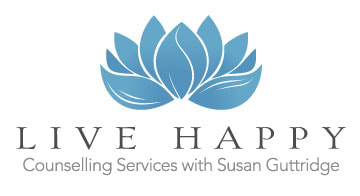
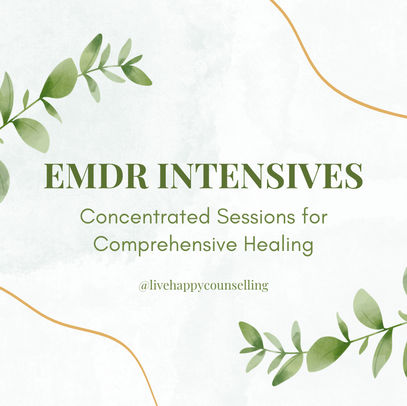
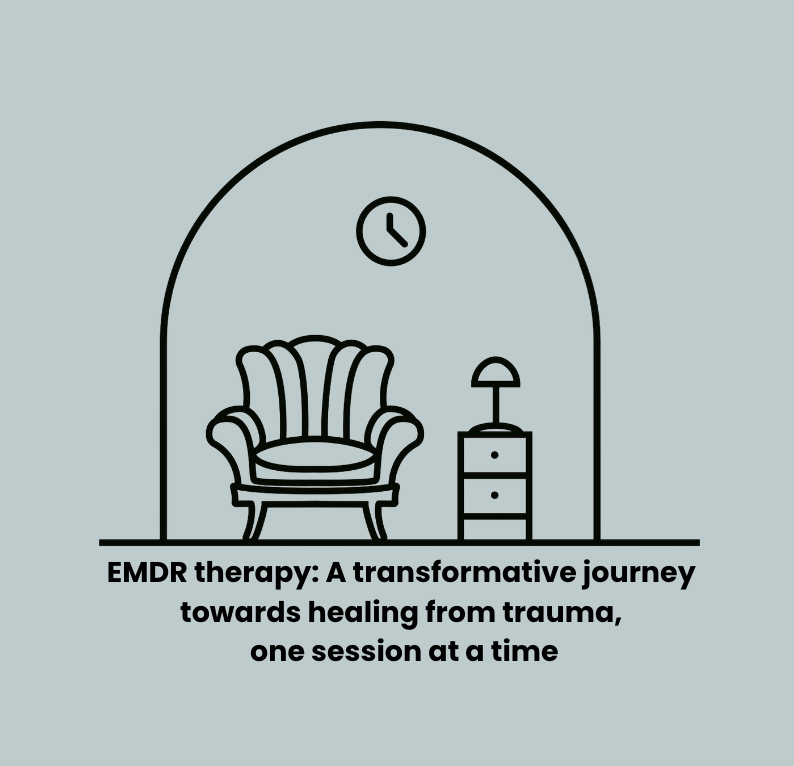

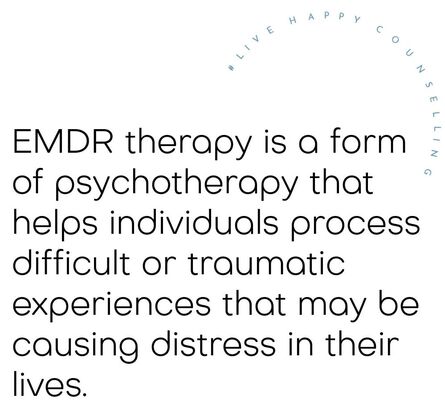
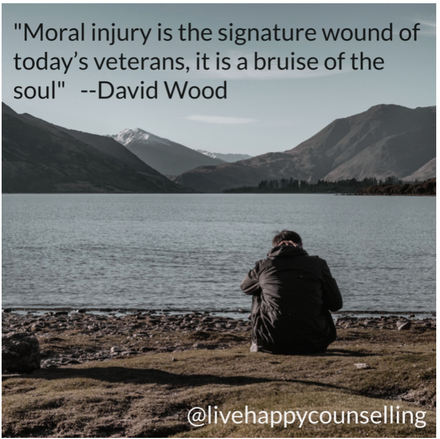
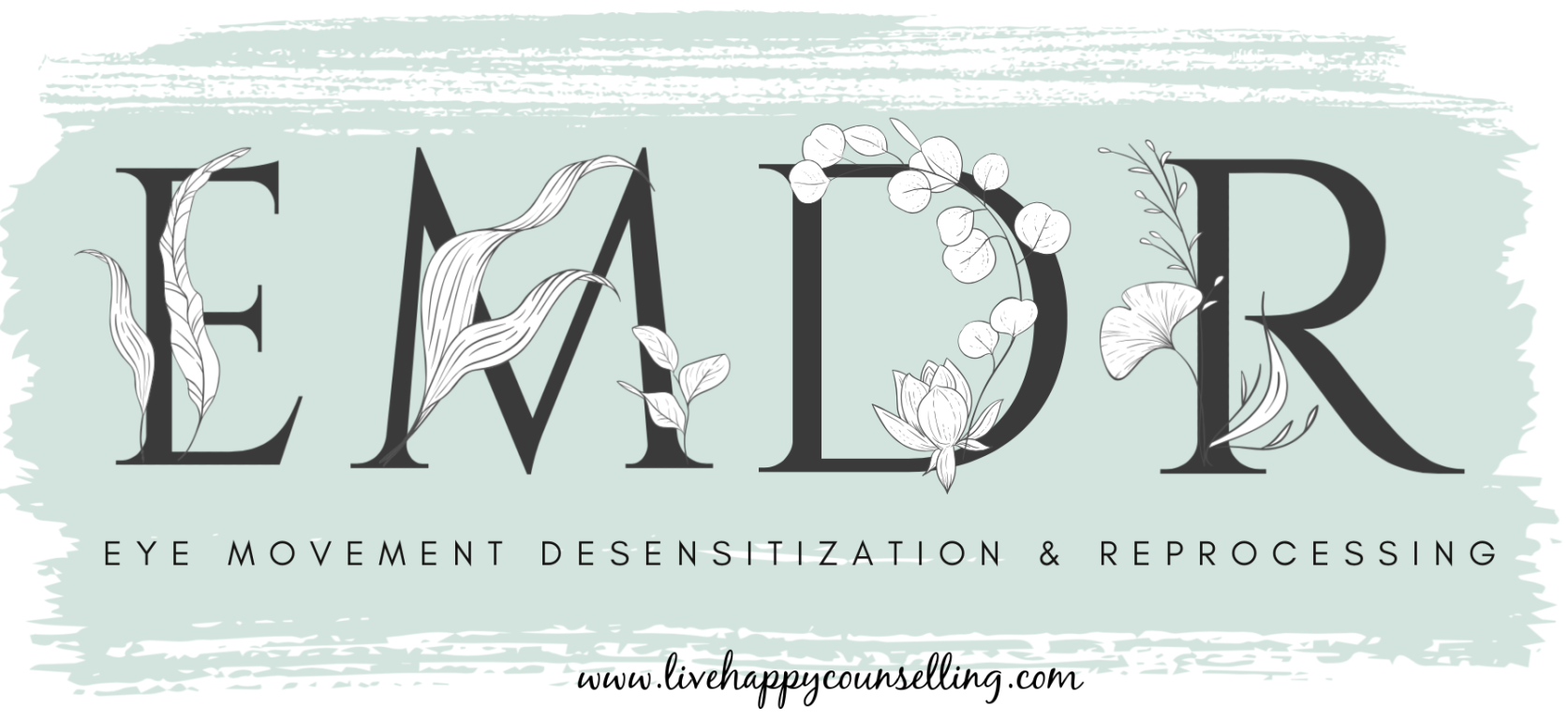
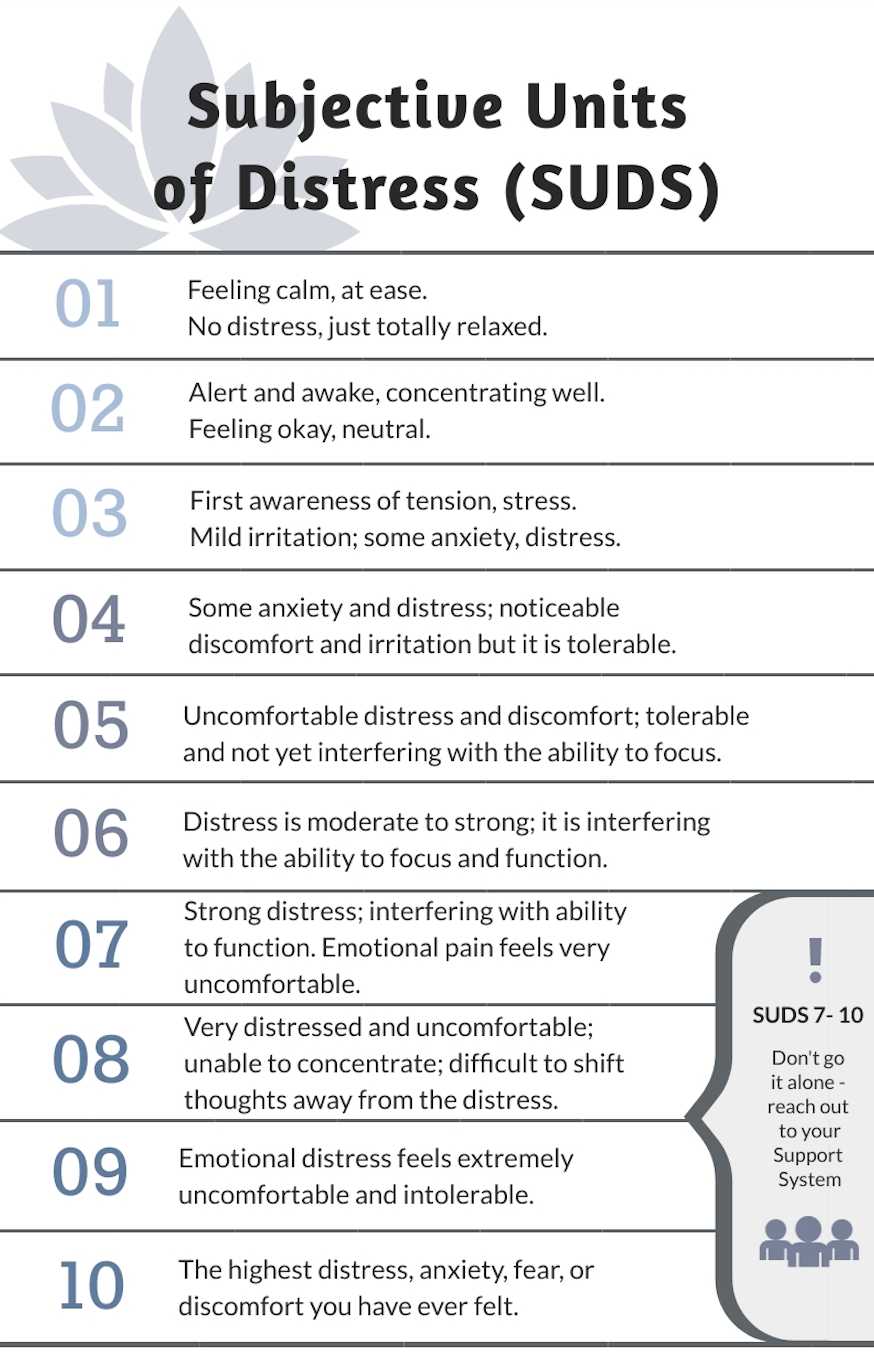
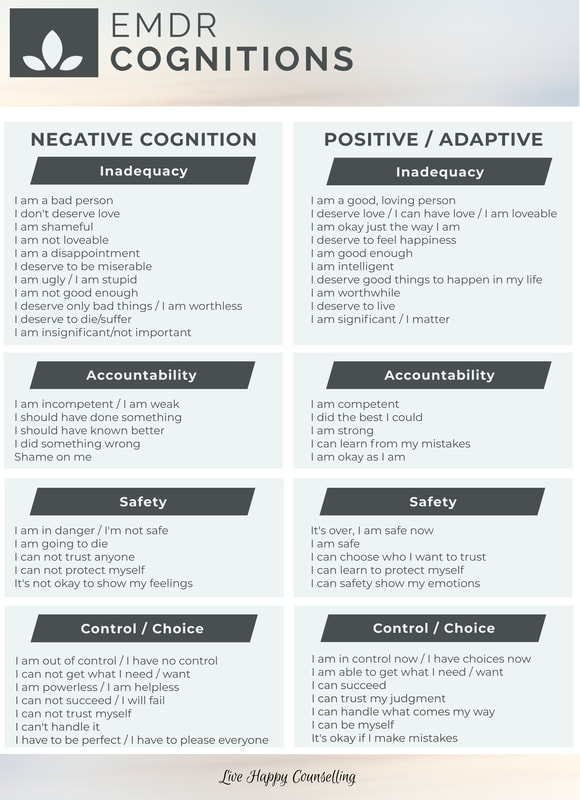

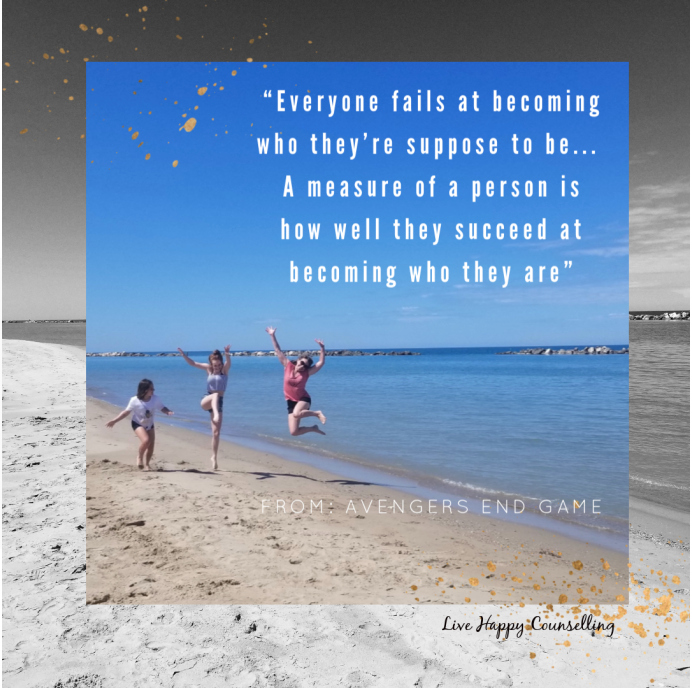
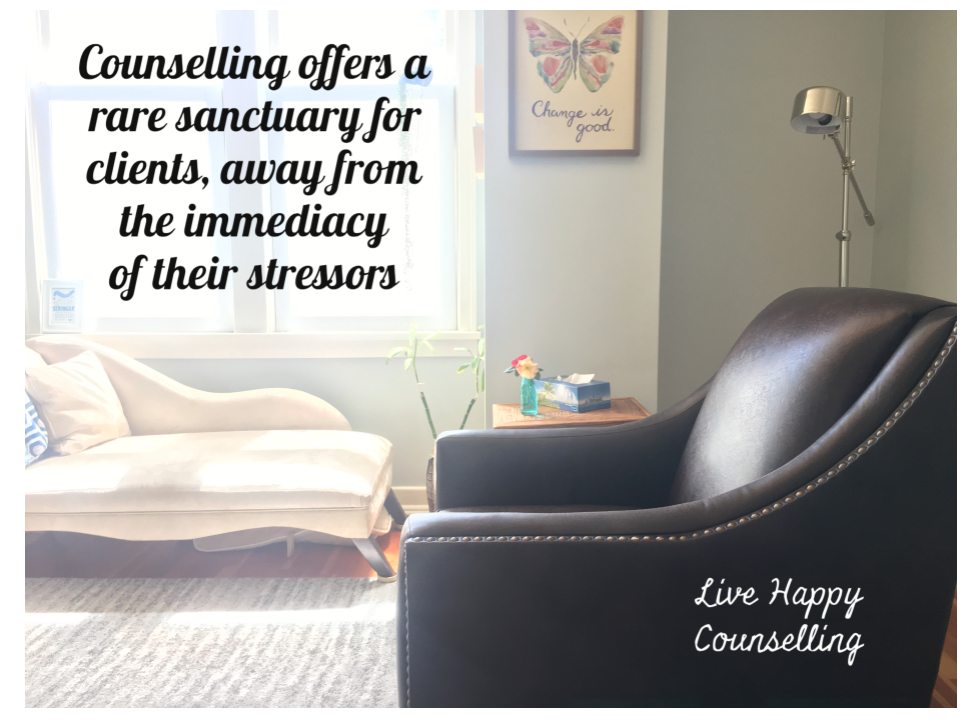
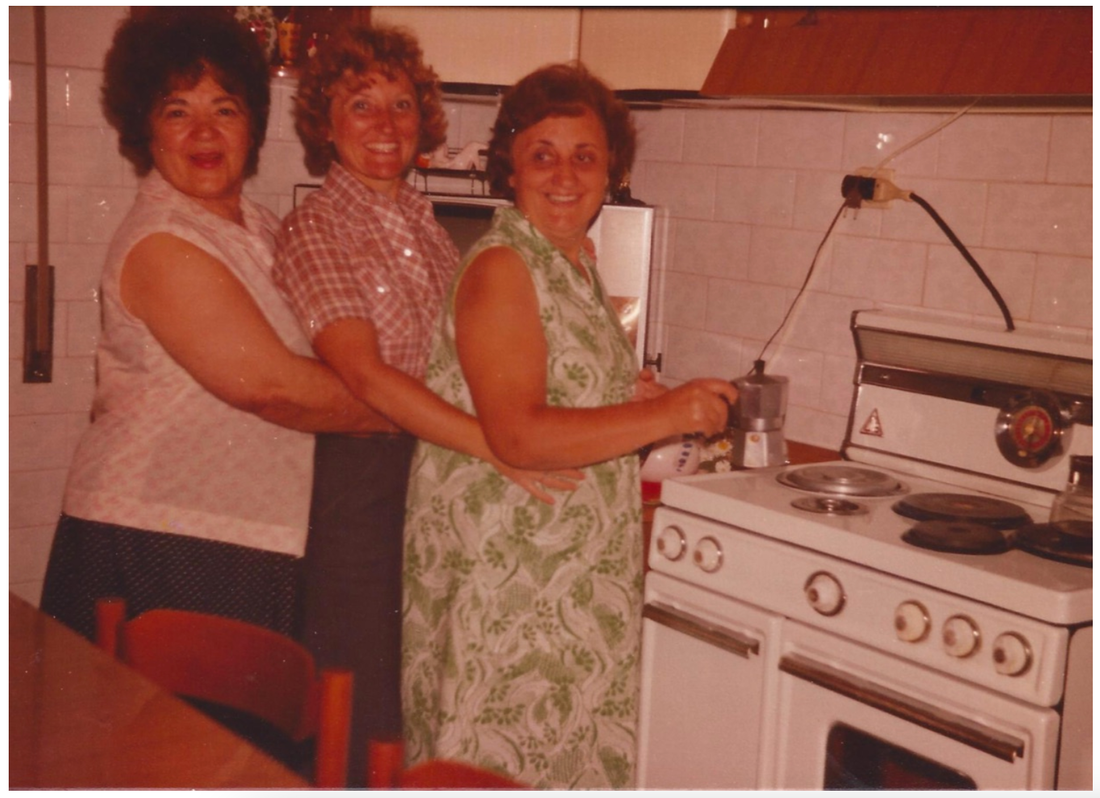
 RSS Feed
RSS Feed